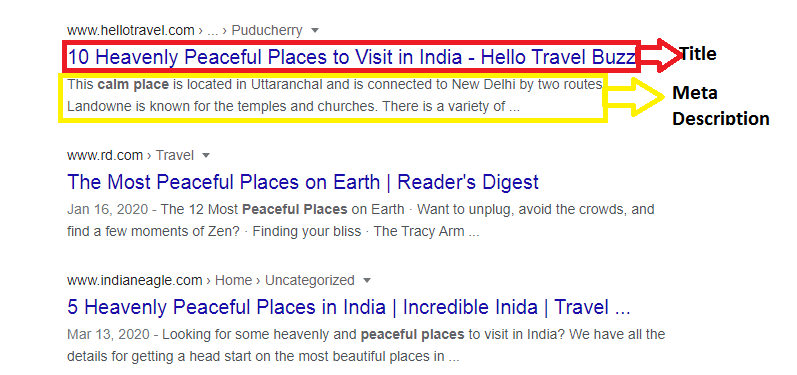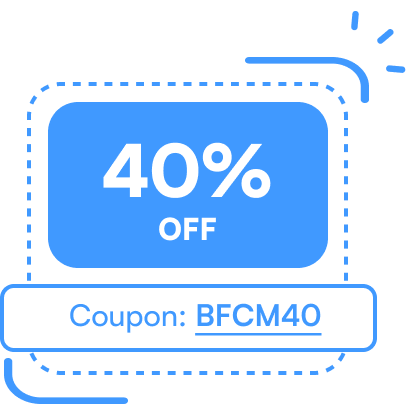The growth of the eCommerce industry is reaching new heights every day. There are so many new eCommerce stores in the digital world now. It is necessary to check all the boxes of your eCommerce SEO (Search Engine Optimization) checklist to rank top in the search engines with all the competition.
How to do SEO for eCommerce websites? This is the predominant question this article will be answering you. SEO content for eCommerce is a vital part of progress in the digital space. The importance of SEO in eCommerce is getting the limelight now, and this is the perfect time to make your move.
Now only SEO during the eCommerce site building days, but you should also audit SEO in eCommerce regularly for better results. You may find the process of eCommerce SEO hard in the initial stage but just imagine the organic, high-quality traffic you get.
The article explains a detailed step by step process to optimize your eCommerce website for search engines. Understand eCommerce SEO content and how to deliver best results with it.
How to Optimize eCommerce Websites – eCommerce SEO Checklist
The process of eCommerce SEO optimization is a crucial one, where you can generate organic traffic by making your website rank high on Google and other search engines. With the perfect eCommerce SEO and checklist of all the required metrics for WooCommerce website, every product on your website will be rated on top of search results and drive more traffic to your eCommerce website.
Steps to follow for better eCommerce SEO Optimization:
In-depth Knowledge of Keyword Research
In every SEO process, keyword research is the most crucial part. It is the cornerstone of a successful eCommerce SEO optimization. This involved the art of identifying the right keywords or search terms that your customer or visitor will look for through the search engine. Keywords, also known as most searched terms, are among the topmost in the eCommerce SEO checklist.
Identify the search terms and then, based on these keywords, build your eCommerce strategy for your store. eCommerce SEO packages consist of top-performing keywords in every category. Keywords decide your progress and website visibility; therefore, a detailed analysis is mandatory.
What to look for in a keyword? Well, there are a couple of criteria that needs to be checked while selecting a keyword.
- Search Volume – This parameter needs to be on the higher end, meaning this indicates the keyword’s popularity. Keywords with higher search volume will get you more potential customers. A keyword with a decent amount of searches can make your ROI (Return Of Investment) better.
- Competition – Also known as keyword difficulty, this indicates the ranking of specific keywords in a particular search result. This should be between low and moderate.
- Traffic – The keywords that you are selecting are they relevant to your business? Can they bring in more traffic? These questions must be at the back of selecting every keyword.
- Know the Intent – SEO content for eCommerce revolves around “user intent.” The single most important element while doing keyword research and SEO competitor research. This is the guiding light towards successful eCommerce SEO. There are typically four types of keyword category based on user intent;
- Knowledge gaining keywords – Eg: how to, what is the, when will.
- Transactional Keywords – Eg: Discount coupons for purchase.
- Branded Keywords – Eg: Amazon, eBay
- Commercial Keywords – Eg: Nokia android phone review
For your eCommerce store, the keywords must be product-based and should satisfy the category of user intent. Your eCommerce SEO optimization must revolve around these types of keywords.
- Competitor Analysis – This step in the eCommerce SEO checklist involves a better understanding of the environment you are about to enter. A thorough analysis of your competitors and discover new keywords.
A simple search related to your product will bring all your SEO competitors in that space, and you can use it to your advantage by scanning their websites and identifying the successful keywords. Just on the surface, you cannot remember your competitor’s keywords, but with an ideal tool for keywords, you can dig deep and unearth better keywords.
- Pro Tools for Better Keyword Results – SEMrush and Keyword Planner are some of the best keyword tools available in the market now. Use them to your advantage and scale-up in the entire keyword process. With these pro tools, you can pick up the top layers of the best performing keywords in any category.
- Keyword Relevancy – SEO content for eCommerce must contain the right keywords. Select the keywords with better search volume and, at the same time, falls under your product niche. Selecting “best dog food” as a keyword is useless if you sell kittens in your online store.
Optimizing your Website Architecture
The representation of product pages and categories in your eCommerce store is called site architecture. An eCommerce store’s site structure is crucial from a user standpoint and an SEO standpoint. Indexing and crawling of your eCommerce store are easier in any search engine. eCommerce SEO content must be organized and presented so that the pages on the website are easy to find by search engine robots.
When a page in your eCommerce website is not correctly linked to the other pages or is on the deep end of your website, search engines will not consider those pages worthy of indexing and crawling. In some cases, those pages will become invisible in the digital landscape. Also, there are some mandatory optimizations you need to follow before publishing your site.
The perfect store structure will make the eCommerce SEO content part easier and give you better visibility and results quickly. Also, a good site structure has the potential to convert a visitor into a customer. Plan the eCommerce website with precision; site structure is a top priority to start with. It makes the SEO process more comfortable and practical.
Remember that every page must be three clicks away from your homepage; more than that, it can turn into a nightmare. A clean and straightforward structure is easy to scale for future developments as they are simpler to restructure.
Content Marketing
Perfect eCommerce SEO optimization can bring up to a certain level but what after that? Content marketing is your answer; it is part of the puzzle that most people forget. The potential of content marketing is beyond expectations when it comes to acquiring new customers.
Content in this sense means blog posts, free version tools, infographics of a complicated process, social media presence through answers to difficult eCommerce questions, etc. All these fall under content marketing. How to determine the topic for the content? Simple, keyword search to find out about the topic people look for in your product category.
Bring in more how-to, review, and tutorial blogs. Your blogs must be educational to the customer; once you make the customer understand the value of your content, better organic visitors are guaranteed. Deliver useful information that genuinely helps your visitor. The better the information, the more the visitor.
On-Page SEO
This is the palace where the real magic happens—combining all the essential ingredients for a successful eCommerce SEO optimization. Your product pages and category pages must be built with the best on-page SEO steps. There are some points to be taken into consideration while making changes in your on-page SEO.
- Title Tags and Meta Descriptions – They are an integral part of the search results displayed.

Successful eCommerce SEO content must include your target keyword in the page’s title tags. This makes search engines know that your page is relevant to the users’ search. The titles need to be attractive, clear, and crisp. They should kindle the user’s curiosity and also should deliver the information about your site.
Descriptions are a big part of improving the click-through rate. Better traffic, better sales assured with the best meta descriptions. Compellingly describe your product for visitors to become loyal customers. Include target keywords in it along with a short description of your page or website.
In eCommerce, SEO optimization makes sure you land on the perfect meta titles and meta descriptions. They should complement each other in bringing in more customers and traffic. Unique and attractive titles and description for all your eCommerce pages is a must for better results.
- Keyword Rich Product and Category Page –
The Search engine needs SEO content to understand what your page is about. More information, better results. By regularly auditing SEO for eCommerce, you can improve it. But make sure that it is perfect while starting the website. An in-depth product or category related page with excellent eCommerce SEO content can do wonders.
The additional advantage of this is that it allows customers to understand more about your product and category. This can easily convert visitors into customers. The product page should include; features, specs, reviews, and package contents. These things will improve your credibility among customers if you are new to the market.
The product page must have your target keyword 3-5 times. Place the keywords in such positions that make sense while reading the whole sentence—don’t stuff keywords into product pages or any other eCommerce SEO content for that matter.
- SEO for Images in the Page – Using clear, high-resolution images in your eCommerce website will be a point added to your site pros. It enhances your sites’ feel and looks. Images also play a part in improving your site’s SEO. With the correct keyword and “ALT-Tag,” your website’s images will appear on Google image searches, increasing your exposure.
If there are relevant images on your site, then the content is also relevant. Google follows this. Your image “file name and alt tag” are essential in improving an image SEO part. They need to be meaningful and should match the image relevance to that of the content. Don’t make the images stick out like a sore thumb with the better content part.
- Link your High Priority Pages – Internal linking of your high priority pages will bring in more visitors to that page through an already famous page. The importance of SEO in eCommerce can be easily understood when you experience an increase in traffic through internal linking.
The best part about eCommerce is that internal links are a natural process in the eCommerce site. During an essential eCommerce store building itself, they will be included to display relevant information about similar products that the user is searching for.
Backlink Building
This is one of the dominating SEO factors when it comes to eCommerce SEO optimization. Your website’s dominance or authority is measured by the number of valid external links, also known as backlinks. Backlinks are a real boost to your site authority, and it gradually increases your organic traffic. They can also be used to promote products and increase sales.
The following are the essential tips for better backlinking:
- Partnership with influential Bloggers
- Strongly lean on video marketing
- eCommerce partnership links
- Reverse engineer competitor links with efficient tools
- Contests and giveaways
This is an essential part of eCommerce SEO optimization but is often overlooked due to the complexity. Reach the right pages, and there will be no looking back from that point on.
Technical SEO
This part is all about providing a great user experience. eCommerce SEO optimization is not all about better search results for your website. There are more pros for an eCommerce website with technical SEO when compared to other websites. There are some points to be followed for the best results on technical SEO.
- Improve your website Loading Speed
- Portable device friendly eCommerce Website (Mobiles and Tables)
- Text Path on top of each page
- Secure HTTPS connection
- SEO Audit for Duplicate content
- Remove or Replace Orphaned Pages
- Fix Broken Links
- No Missing Tags
- New Page submit for Google indexing
- Generate Sitemap
All these are essential for delivering the best technical SEO results. They are mandatory in improving your website credibility factor and brand trust.
Before and After SEO Optimization
To know your eCommerce site’s progress and rectify the process’s mistakes, follow a before and after chart of the crucial parameters. Every action taken to improve the eCommerce SEO must be analyzed with the result. For example, the visitor count is 100 per day before you start keyword research. You should know the change in visitor count after the implementation of the researched keywords.
In this way, you can identify if there are any errors in the methods or approaches that you are taking, and it can be corrected then and there. Regular SEO audit of the eCommerce website will also make you understand the lacking areas and point out the areas that are to be concentrated.
What are the reasons for optimizing your eCommerce website?
There are a ton of reasons for optimizing eCommerce SEO optimization. It helps in a more productive website with better results. This is the right time to jump on the ship if you plan to stay afloat in the sea of eCommerce. A website without readers or visitors is of no use, and it needs to be rectified, so SEO is your answer. The main reason to learn and implement the art of SEO optimization is;
- Reaching targeted/specific audience
- Improve organic traffic
- Retain existing visitors
- Reduce ad spending
- Better website performance
- Deliver user expectation
These are the critical reasons to optimize your website. They play a massive role in lasting longer in the eCommerce space. Regular SEO checks and improvements are mandatory for better results as the business progresses. Make the right choice and obtain better results. Increase your organic traffic, thereby increasing your revenue and brand reach.
On a Final Note
Do you want your online store to be more visible to a larger audience? The article has given you tips and tricks to improve your eCommerce store’s visibility and it is your decision to implement it or not. Make the best use of it. Convert random visitors into loyal customers. Improve your reach and expand your audience base at an astonishing pace with perfectly optimized sites.
Last but not the least, if you are not a SEO and you are seeking the best eCommerce SEO service to promote your business. you can visit itsgeekynerd.com.
We also own a team of excellent WordPress developers that you can leverage for ease. Hire WordPress developers anytime you require.
Frequently Asked Questions
An eCommerce SEO is a process of making the eCommerce website, product pages, and category pages visible to a more large audience. It is done through eCommerce SEO optimization which ranks the eCommerce website among the top results when searched through a search engine.
Usually, users are not interested in visiting the second or third page of their search results. With proper SEO the eCommerce website will be ranked among the top search results on the first page for a relevant search based on their eCommerce site. This will increase potential customers to the website thereby increasing sales and revenue.
The best eCommerce SEO checklist involves; keyword research, better and unique meta tags and descriptions, keywords in heading, keywords in URL, image alt tag, and file name. There are some of the most mandatory SEO checklists for an eCommerce website.
Secure and accessible website, better technical SEO, perfect internal links, valid backlinks, optimized content, domain age, and authority. These are the crucial factors for search engine ranking.
The audit must include checking of all the SEO parameters, should compare reports of before and after SEO implementation to rectify mistakes if any. Also, constant monitoring of all the essential SEO elements.






